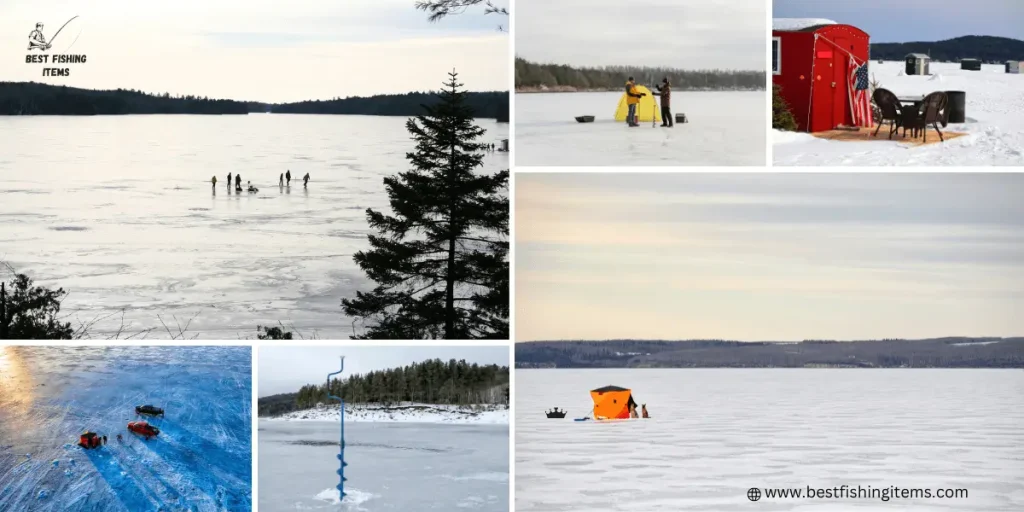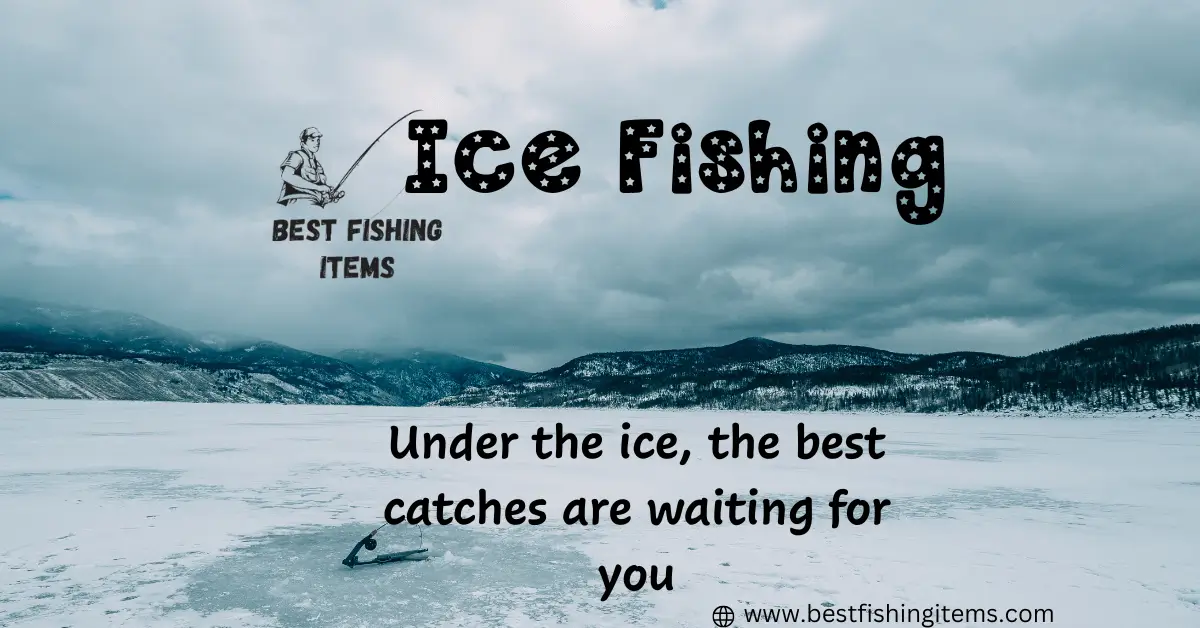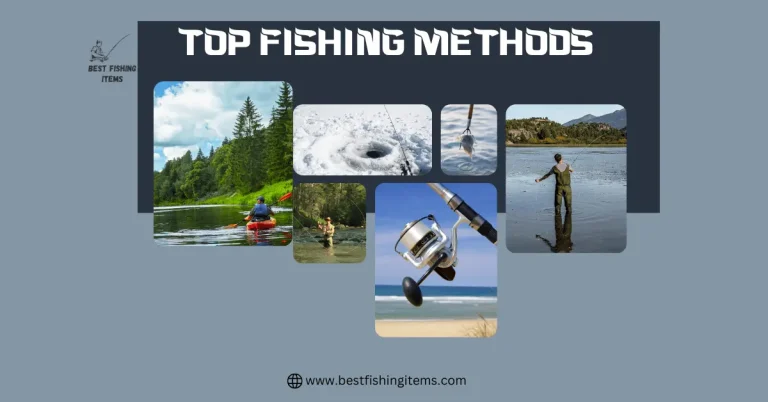Ice Fishing
Fishing can also be practiced in colder areas during cold periods. Ice fishing is a cold weather angling method used to catch fish from frozen water bodies using different tools.
Ice fishing can be done on frozen lakes, ponds, streams, and rivers. The fisherman uses different gear and techniques for catching fish. Ice fishing can be a fun or outgoing activity captured by anglers who live in colder areas. It can be the only source of food in such areas.
Ice fishing can be enjoyable or it can be hazardous too; some rules and regulations are not followed. For fishing in colder regions, safety precautions are the most important ones. Sleds or shelters can be helpful for a long ice fishing trip.
Crappies, bluegill, trout, and panfish are some fish species that you can target in a cold body of water.
Location For Ice Fishing
Location is the very first thing needed to grab the spots where you are fishing. For this purpose, go to a seasoned angler in order for guidance on which colder areas will give you the chance to get out the fishing experience.

Any seasoned angler will guide you enough that you will be able to decide location on your own. He will also explore the types of fish caught in those areas. You can also use Google Maps to find the right location for angling.
Usually dusk and dark are the best times for fishing.
Essential Gear Needed for Effective Ice Fishing
Gear is the basic need for any fishing method. If you have decided to go fishing, then go for help with essential fishing gear or tools that must be used by anglers.
The basic gear needed for ice fishing is
- Rod and reel
- Lure or bait
- Line
- Spud like Auger
- Skimmer
- Heater
- Sleds or shelter
- Waterproof boots and suits
Rod and reel: For ice fishing, a shorter rod is used as compared to rods used in other angling methods. When choosing the right fishing rod for ice fishing, you must check its sensitivity, as sensitivity is necessary. Basically, a rod with 25 to 37 inches is suitable for ice fishing. Some anglers use a tip instead of a rod. Reel should be spinning for ice fishing and with high speed quality.
Lure or bait: Bait and lure are very important for any angling technique. The bait is the diet of icefish for which the fish bites the lure and is caught in the lure and preyed on. Insects, worms, and minnows can be used as bait.
Spud: When you start ice fishing, the first step is to make holes in the frozen body so you can easily reach the fish.
An Auger is a spud that is used to drill holes in the frozen body of water. Usually 3 to 5 inch bottom holes are drilled. It is the most important material used by anglers to chisel holes in frozen bodies of lakes, ponds, and rivers.
Line: As a rod and reel, line is also a crucial part of essential gear. That is used to land in the drilled-hole frozen body of water. The lure or bait is attached to the line. The length of the line is shorter. Usually the line made of monofilament is mostly used for ice fishing.
Skimmer: Skimmer is a plastic-made material used to remove the slush from the left ice. Plastic buckets can also be used, but they could be broken, so Skimmer is the latest option.
Heater: In colder areas, when the temperature falls, an electric heater is used to warm the angler as well as the side layers of the holes. The angler can also use a heater to get heat in the shelter.
Sleds: Sleds are transportable vehicles or trucks that are used by anglers to stay for a trip of ice fishing. The sleds are designed with heat, stoves, and bunks and with many amenities.
Waterproof boots, gloves, and suits: While on ice during cold water conditions, there are needed waterproof boots and gloves that will protect to get wet and windproof suits that avoid cold wind to enter in.
Methods of Ice Fishing
There are two main types of ice fishing: the tip-up method and the jigging method.

Tip_up: In the tip-up method, a long stock and trigger device are used. A flag is attached to the stick. With a flag a spring is used. When the fish bites the bait, the spring activates and the flag moves up to inform the angler that the fish is caught.
Jigging is a traditional method. Jigging pole is shorter and lighter. It can be about 2 feet long. The jigging poles are used to move them up and down to attract the attention of fish. The lure or bait is attached to the pole to grab the fish at tension.
Safety Tips For Ice Fishing
Where ice fishing is a cold-weather fishing sport, it can also be hazardous. The thickness of the water body and weather conditions affect ice fishing. Some safety concerns for ice fishing are
- Clear ice is a good place for fishing.
- Always go with a buddy for ice fishing.
- Put a rope or something to pull your friend or buddy in case of any problem.
- The thickness of ice for walking is 3 inches for snowmobiles, 4 to 5 inches, and for vehicles and trucks, a 6 inch thickness of frozen body is suitable.
- Do not go far from the place to bridges or the centre of the water body.
- Wear layers of warm clothes to avoid getting sick in such cold weather.
- Avoid walking along the banks of lakes because the ice melts in such places.
- Avoid riding vehicles on already drilled holes or the thin frozen body of water.
- Avoid fishing in windy weather or in storms.
- After fishing, fill the drilled holes with ice to avoid any hazards.
- Choose the original thick ice instead of cloudy ice.
- Always mark a flag to represent your place of fishing in order to avoid any accidents.


